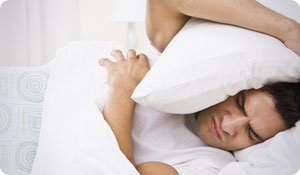
Sleep aggression is one of several known parasomnias, or sleep disorders that are characterized by unusual or disturbing experiences upon arousal, such as sleepwalking, sleep eating, teeth grinding, sleep talking, bedwetting, and night terrors. Aggressive sleep behavior is actually closely linked to sleepwalking and sleep terrors, and a 2004 study published in the American Journal of Psychiatry also found that sleepwalking violence can be added to this list as a separate, overlapping condition that explains aggressive or even violent behavior following an episode of sleepwalking.
Many different circumstances may be at the root of parasomnias, including family history, unusual sleeping schedules, lack of sleep, stress and psychiatric conditions such as depression and anxiety. Parasomnias often occur during non-REM sleep periods and coincide with one or more of numerous arousals experienced during the night. Upon full awakening, people with parasomnias, including sleep aggression, cannot recall their behavior or experiences.
REM behavior disorder (RBD), another rare condition in which people act out their dreams, can also lead to sleep aggression and even violent actions. Normally, we are in a temporary state of paralysis during REM, or rapid-eye-movement sleep. In a person with RBD, that paralysis is released and physical activity, or acting out of dreams, becomes possible. RBD occurs most often in older people and during the later part of the night. The key difference between the parasomnia sleep aggression and RBD aggression is that, in RBD, the individual has a clear memory of aggressive behavior.
To differentiate between the two conditions and come up with a diagnosis, a doctor or psychologist must conduct a sleep study to observe the timing and responses to arousals throughout the night over a period of time. A diagnosis is helpful to determine an appropriate treatment plan, which may include medication and self-protective changes in your bedroom or other sleep area to prevent accidents. In addition, RBD may be associated with other sleep disorders that can be diagnosed during a sleep study and has also been linked to dementia, Parkinson's disease and other neurological conditions that can be ruled out during a physical examination.
Sources:
Cartwright, R. "Sleepwalking Violence: A Sleep Disorder, a Legal Dilemma, and a Psychological Challenge." The American Journal of Psychiatry 161:1149-1158, July 2004 Web. 26 April 2011.
http://web.missouri.edu/~segerti/1000H/Sleepwalking.pdf
Leong, G. and Silva, A. "Sleep-Related Violence." American Academy of Psychiatry and the Law/AAPL Newsletter. January 1999:24(1). Web. 27 April 2011
http://www.aapl.org/newsletter/N241_Sleep_related_violence.htm
Mayo Clinic: REM Sleep Behavior Disorder Web 27 April 2011
http://www.mayoclinic.org/rem-sleep-behavior





